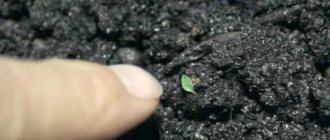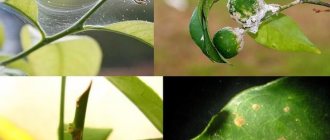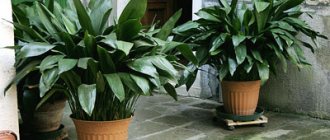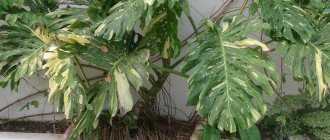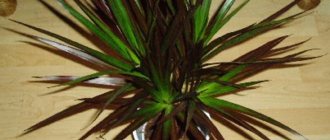Hibiscus variegated or Coopera is a variety of Chinese rose belonging to the Malvaceae family. It received its first name due to the characteristics of the leaves, the colors of which change depending on the conditions of detention. In bright light they become variegated, green-white-reddish. The second name was given to the plant in honor of Daniel Cooper, it was he who first brought it to Europe from New Caledonia. The birthplace of the flower is South China. In Latin it is called Hibiscus rosa-sinensis var. Cooper. It grows in Indonesia, Sri Lanka, Egypt, China, Indonesia and Hawaii.
Description of the plant
At home, variegated hibiscus feels great and can live up to 20 years. Flower growers often call it Chinese rose because of its beautiful inflorescences, reaching 12 centimeters in diameter. Flowers can be double or regular. Cooper's hibiscus comes in many varieties, all with different petal colors and flower shapes. Most often, the inflorescences are painted in bright red or pinkish shades. Species with orange and yellow petals are popular.
Flowering usually occurs from March to October. But at home, with favorable maintenance factors, plants are able to produce abundant flowering in winter. The lifespan of the inflorescences is short - they begin to fade 1-2 days after they bloom. But since new buds and petals are constantly appearing on one bush, the effect of prolonged flowering is created.
In place of the inflorescences, fruit-boxes are formed, inside which a large number of down-covered seeds ripen.
The leaves of this variety of hibiscus are striking in their variety of color combinations. Moreover, on one plant there can be a combination of completely green leaf blades and those with yellowish, white and red transitions. All of them are covered with fancy patterns. The leaf size can reach 15 cm in length and 6–7 in width.
Hibiscus variegated is a tall plant. Even when kept indoors, its height often exceeds 100–120 cm. Flower growers form lush crowns of domestic specimens. This can be done due to the fact that they respond well to pruning, grow quickly during the growing season and produce side shoots. They begin to bloom in the year of planting.
Types and varieties of Chinese roses
There are about 300 varieties of Chinese rose.
Swamp hibiscus
Swamp hibiscus is unpretentious and is characterized by abundant flowering. The plant has managed to adapt even to the harsh Russian climate and is actively growing within the Moscow region. The shrub, which grows in a subtropical climate, has been able to take root in northern latitudes, where it is mainly grown as an indoor houseplant. But in order to obtain especially large and flowering specimens, hibiscus is grown in open ground. The main conditions for breeding in this case are the availability of special agricultural technology and a well-chosen planting site.
Swamp hibiscus
When optimal conditions are created, it can grow up to 2.5 m in height with a crown width of up to 1.8 m. It is distinguished by a straight stem, dense and green foliage. The bottom of the leaf blade is usually light and pubescent. The inflorescences can be from soft pink to bright purple, with dotted bright inclusions. The plant can reproduce by cuttings or seeds.
Terry hibiscus
This representative of the Malvaceae family, unlike the ordinary Chinese rose, has larger flowers, often bright yellow.
Until the plant has reached its maximum growth, it should be replanted once a year (in spring), gradually choosing a larger pot. A fully formed plant needs to be replanted once every 4 years. Soil for hibiscus is chosen with a neutral acidity level.
Hibiscus variable
Under natural conditions, this plant can reach 4 m in height. On average, per year, the variable hibiscus grows by 30 cm in height and 35 cm in width. It is distinguished by an umbrella crown and a branched trunk, large leaves of a rich green color. In the process of home breeding, it does not exceed 3 m in height.
Feed the hibiscus once every three weeks. In the spring months, the best fertilizer option will be mixtures with the addition of sodium and nitrogen, and during flowering - mineral ones with the addition of iron.
Note! Young hibiscus need replanting. This is done once a year using the transshipment method.
Adult specimens are replanted every three years.
Double Chinese rose
Hibiscus Cooper
This type of Chinese rose received its name thanks to the person who first brought it to England. The main feature of this plant is that the leaves are able to change their color depending on the light intensity and ambient temperature.
Cooper's hibiscus blooms actively in a lit room, but not in direct sunlight. With a lack of light, the crown suffers, and the splendor of flowering is significantly reduced. The optimal air temperature in the room in which such a flower grows is +20-25 degrees.
Hibiscus variegated
Variegated hibiscus has a large number of varieties, each of which is characterized by a certain shape and color of flowers. The leaves can reach a length of up to 15 cm. The flowers most often have a bright red color. Suitable for growing in winter gardens and indoor conditions.
Variegated hibiscus prefers rooms with good lighting. If there is a shortage of it, the flower will grow slowly and the flowering will not be as lush. The optimal temperature for growth is +20-25 degrees.
Hibiscus red
This is one of the most unpretentious species, therefore it is quite common. But unlike other members of the family, it has one distinctive feature: the petals of its flowers are located on two levels. The lower tier consists of 24 petals, the upper one of 16.
Hibiscus yellow
This is one of the most capricious species. This plant is characterized by a powerful trunk and abundant flowering. The flowers are yellow, with characteristic red veins.
Hibiscus white
Hibiscus flowers with white flowers have a special charm. Their main feature is that the flowers can change color from white to pink.
Note! Hibiscus can grow both white and pink flowers at the same time. The latter usually form on young shoots
In the wild growing conditions in the Crimea and the North Caucasus, the tree-like white hibiscus Syrian White Chiffon is often found. This Syrian hibiscus can be grown in open ground; planting and caring for it is quite simple and does not require special knowledge.
Less common is the Syrian Chinese rose Matilda. There is another variety of white hibiscus - Chinese. It is a woody shrub up to 6 m high with wide green leaves. The flowers of the plant form massive clusters.
Note! The variety Pink Elephant (Pink Elephant) is now very popular.
Subspecies of Hibiscus Cooper
Flower growers successfully grow several variegated varieties of hibiscus.
- Cooper's hibiscus (Hibiscus rosa-sinensis var. cooperi). The name was coined in honor of Daniel Cooper, who brought it to the UK from the French Pacific territory of New Caledonia.
- Hibiscus "Carnival" (Hibiscus rosa-sinensis var. cooperi carnival). It has predominantly pink shades in the bud.
- Hibiscus Snow Queen "Snowqueen" or "Snowflake" with variegated leaves, and there is more white in its color than other species. It has leaves of a different shape, and the bush itself is small in size. During flowering, scarlet buds bloom on it.
- Hibiscus 'Rose Flake'. The leaves are colored green-white-pink, and the buds are bright scarlet.
History of origin and geography of habitat
India and China are considered the birthplace of hibiscus . Thanks to the Silk Road, this beauty came to the Middle East. The oriental rose appeared in European gardens in the 13th century.
Cooper's hibiscus was introduced to England from New Caledonia by Daniel Cooper and was subsequently named after him.
Today, hibiscus grows in:
- Thailand;
- Egypt;
- China;
- Sudan;
- on the islands of Ceylon and Java.
When and how does hibiscus bloom?
In the homeland of roses, the corollas bloom from March to October. If you care for the Chinese rose correctly, prune it on time, ensure a bright position, cool wintering, hibiscus will bloom at home starting in May.
The plant produces buds on the current year's growth. It is possible that the corollas will appear and open earlier if you do not prune the Chinese rose. But then the flowering will be sparse, the buds stop forming after about 2 months, or 1-2 pieces appear on a large shrub intermittently.
If you follow agricultural practices and timely annual pruning, hibiscus flowering can last 8-10 months.
The corollas of the species plant are simple, red, with 5 petals, about 10 cm in diameter. The pistil is prominent, long, smooth or slightly curved, ending in five fluffy stigmas. Easily visible, bright yellow anthers are attached to the sides in the upper third.
Chinese hibiscus flowers are single, wide bell-shaped. Large rounded petals are smooth or wavy, with a more or less clearly visible vascular pattern. The diameter of the corollas of cultivars reaches 16 cm, there are varieties with a cross section of 20 cm. There are double or simple flowers; in the El Capitolio series they are two-tiered.
The coloring is plain or combined, with a contrasting “eye”, border, specks, strokes, sagging. It was previously believed that there were no blue Chinese hibiscus. Now lavender, lilac and purple colors have been added to the red, yellow, white, pink, orange palette.
The fruit is a five-leaf capsule. Hibiscus seeds rarely ripen at home. Pollination must be carried out manually; as soon as the corollas open, you will have to abandon further flowering - after the ovaries appear, the Chinese rose will begin to shed buds.
What does it look like
Hibiscus is common not only in Asia Minor. It is often found in America and Africa. In wet meadows in floodplains, it forms dense thickets, abundantly decorated with flowers. He loves water very much, for which he received the name “swamp mallow” in his homeland. In our country, hibiscus is more often called Chinese rose.
Hibiscus belongs to a large genus of the mallow family. Information about the number of the genus in sources differs. On average, the genus has from 150 to 300 representatives. There are wild and cultivated species, different in growth type and color. The genus includes herbaceous annuals and perennials, shrubs and trees.
Hibiscus leaves are petiolate with notched edges. Almost all species bloom with large, beautiful flowers. The flowers are very elegant and have a brightly colored corolla. After flowering, the fruit ripens - a capsule with an abundance of seeds. After ripening, the fruit splits into five leaves.
In areas where hibiscus grows naturally, it is used not only as an ornamental plant. Young shoots and leaves are considered a vegetable crop. The roots, fruits, seeds and leaves are used for medicinal purposes. The flowers are used to produce a natural dye. Dried hibiscus petals - the basis for making Hibiscus tea
Cooper's hibiscus bush leaves
This is how the leaves of this hibiscus variety look unusual. Perhaps this is the first sign by which you can determine what species this hibiscus belongs to. On the surface of the leaves you can find white stains and pink and light green spots.
The variegation of the leaves of this hibiscus variety depends not only on the natural characteristics of the plant, but also on the growing conditions. In illuminated areas (window sills), the foliage will be variegated, and in shady areas, the color of the leaf patterns becomes green. However, in a shady place in your home, the flowering of hibiscus will become less active, the growth of the plant itself will slow down and may even cause unopened buds to wither and fall off.
Buy rooted hibiscus cuttings
A rooted shoot (cutting) of hibiscus (Dutch) can be bought from 300 to 650 rubles. The minimum purchase amount is 1000 rubles. We do not send plants cash on delivery.
For the availability of hibiscus in our nursery, see the “Hibiscus Catalog” section. When choosing hibiscus, instead of the name, you can indicate the number of the flower in the general photo.
Description and recommendations for growing other plants:
In our plant and seed nursery you can buy seedlings of indoor plants, in particular house hibiscus.
If you bought a rooted cutting and sometimes a blooming indoor flower in our nursery in a technical (temporary) pot, after some time you need to transplant this flower into a new, permanent pot. In this article you will find recommendations on how to do this, including a video on how to replant Florida hibiscus (at the end of the article).
For a detailed description of the characteristics of hibiscus and other information, see the articles: Indoor hibiscus and Indoor hibiscus description.
In this article you will find a description of the abutilon plant and recommendations on how to grow and propagate indoor maple at home.
Home orchid planted in a pot. How to care for an orchid at home. Tips for replanting, watering and nursing in case of illness. Photos of flowers of different varieties of orchids.
How to propagate indoor pelargonium at home using cuttings and seeds. Recommendations for growing and caring for pelargonium.
Description of the most popular types of clematis. Recommendations from an experienced gardener for planting, growing and caring for clematis.
Anthuriums: Andre, Crystal, Scherzer 400 rubles
Anthuriums: Andre, Crystal, Scherzer. Description and cultivation of these three main types of indoor anthuriums at home.
In this section you will find a video with recommendations for caring for indoor hibiscus.
2017 / Indoor flowers, plants and seeds for the garden
Source: jubkiplus.ru
Cooper's Hibiscus Care
Flower growers have long mastered the intricacies of caring for Cooper's hibiscus at home. The secrets of active growth and development are in lighting, watering and fertilizing. It is also important to trim the shoots in time to form a beautiful crown.
All ornamental plants need full natural light. This must be taken into account when choosing a location for the “Cooper” hibiscus. An unsuccessfully chosen zone will slow down the growth and development of the indoor beauty. The variegated Cooper's hibiscus should expect abundant flowering in March, which can last until the last month of autumn. Preference should be given to the eastern and western windows of the room.
Propagation by seeds and cuttings
To obtain a new plant, a propagation procedure is carried out at home. The process is carried out in two ways:
- By cuttings. 5–8 cm long apical cuttings are cut from the mother tree. The cutting areas are treated with a root former. After which the cuttings are placed in sandy soil. Cover with film, regularly ventilate and moisten. After 3–4 weeks, full-fledged roots appear and the plant is transplanted into separate containers.
- Seeds. A longer and more complex method.
Before planting, the seed is treated with a solution that stimulates growth. Then the swollen seeds are planted in a light substrate, moistened and covered with glass. Ventilate periodically and maintain a temperature of 25 degrees. The first shoots appear after 12–14 days, and with the appearance of three leaves the plant is pruned.
Flowering during seed propagation occurs no earlier than after 3–4 years, and when cuttings occur after 1 year.
Growing at home
Growing hibiscus at home is not difficult even for a novice gardener. The easiest way to do this is from a plant cutting.
Before planting, it is recommended to treat the cut cuttings with a special growth stimulator, which is sold in florist shops. Then the cuttings should be rooted in a container with a sand-peat mixture or simply placed in water.
You need to grow cuttings in a warm, bright room. Within a month, the young plant will give roots. When this happens, the cuttings need to be planted in a separate pot with soil fertilized with peat and humus.
Reproduction of garden hibiscus
How to propagate hibiscus
As you can see, even novice gardeners can plant and care for hibiscus. The propagation of hibiscus and its care after propagation are also simple. Garden hibiscus (Syrian) reproduces by layering, grafting, but most often by cuttings and seeds. Hybrid hibiscus is propagated by dividing the bush, grafting and green cuttings.
In the photo: Orange hibiscus
Hibiscus from seeds
Growing hibiscus from seeds begins from January to March. Before sowing, hibiscus seeds are soaked for half an hour in a dark pink solution of potassium permanganate, and then for a day in a small amount of epin solution so that the seeds are barely covered with it. After this, the seeds are sown in containers with a mixture of sand and peat, covered with glass and placed in a warm place where the temperature is kept between 25-27 ºC; it would be a good idea to arrange bottom heating for the container with sowing.
It is also necessary to regularly ventilate the container with seeds, remove condensation and moisten the substrate.
When the first leaves develop on the seedlings, they are planted in individual pots. Make sure that the seedlings do not stretch out: if they do not have enough light, you will have to provide the seedlings with artificial lighting. Hibiscus seedlings are planted in open ground in mid-May. Strong specimens can be planted immediately in a permanent place, while weaker specimens are planted for growing in a training bed at a distance of about half a meter between specimens. Garden hibiscus, unlike hybrid hibiscus, also reproduces by self-sowing.
Propagation of hibiscus by cuttings
For vegetative propagation in the summer, hibiscus cuttings with two or three internodes are cut, the lower sections of the cuttings are treated with a growth stimulator, then they are planted in greenhouses with a peat substrate and bottom heating is organized. Rooting of hibiscus occurs within a month, after which the cuttings are transplanted into pots with leaf soil, peat, turf soil and sand in equal parts, watered regularly, and when new shoots grow, they are pinched to stimulate tillering. As soon as the bush is formed, it is transplanted into open ground, and if it is properly cared for, hibiscus from cuttings will bloom in the first year after planting. Experienced gardeners manage to root hibiscus cuttings not in soil, but in water.
In the photo: Large hibiscus flower
Possible problems
Cooper's hibiscus at home is an unpretentious plant. Even with not very careful care, the Chinese rose is able to delight its owners with its growth and stable flowering. The main threat to the plant is the lack of regular watering (the appearance of dry soil), insufficiently humid air and the occurrence of drafts. If these factors appear, the Chinese rose stops blooming and sheds its leaves. Therefore, it is very important to regularly water the plant with additional spraying from a sprayer to eliminate the lack of moisture so necessary for hibiscus.
In order for the hibiscus to be constantly in good shape, it is necessary to monitor the appearance of aphids and spider mites. To prevent them from appearing on the plant, it must be periodically treated with special preparations or simply regularly washed with stems and leaves under a warm shower. Simply wiping the leaves with soapy water can also help combat this problem.
Hibiscus from Florida
For a long time it was believed that shades of blue were not characteristic of hibiscus. However, recently our hibiscus lovers have been able to obtain varieties of American selection, for which the name “Florida” has been assigned. The flowers are double, semi-double and simple, of completely unimaginable colors - lavender, violet, lilac, brown, purple, not to mention red, pink with a transition from one color to another, with stripes or specks. In terms of habit, they are slightly different from their usual Dutch relatives. They have a more powerful trunk, larger, more rounded and folded leaves, huge flowers - in some hybrids the diameter can reach 20–25 cm!
As a rule, the flowers last only one day - they open early in the morning and fade in the late evening. True, varieties have appeared in which they remain open for 2 and 3 days. For example, the Creole Lady variety changes color shades every day. The flowering itself lasts about 3 days: on the first day the flower is very bright, on the second day the color is more restrained, on the third it can acquire shades of gray.
Flowering continues from early spring until late autumn, and if the plant is provided with additional lighting in winter, then all year round. My collection started with “Floridians” and now includes about 60 varieties.
Caring for Florida Hibiscus
It is practically no different from caring for an ordinary “Chinese rose”. They prefer bright diffused light, but without direct sunlight. In summer they thrive on western and eastern windows, and for good flowering they need abundant watering, spraying and fertilizing.
With a lack of light, they bloom sparingly or stop flowering altogether. If you want to admire fabulous flowers in winter, it is better to arrange additional lighting. Phytolamps should be placed above the plants at a distance of 50–60 cm and illuminated for up to 8–10 hours a day.
Propagating Florida Hibiscus
Cuttings of many modern varieties root poorly. Therefore, in order to obtain strong seedlings, they are grafted with a cutting or bud onto our ordinary Chinese hibiscus. Grafted plants are more hardy, grow faster and acclimatize more easily in a new place.
Table of symptoms of hibiscus diseases
Quite often you have to deal with yellowing, drying out leaves, and falling buds. There are other problems too. The reason is not necessarily hidden in an attack by pests or a specific disease - problems can be caused by simple care errors. You can see the main problems and their causes in the table.
Table - Difficulties in growing hibiscus
| Problem encountered | Possible reasons |
| Leaves turn yellow | — Root diseases; - pests; - leaf chlorosis; - dry air |
| Leaves turn yellow and fall off | — The soil is too damp in winter; — low air humidity; - stressful situations; - pests |
| Hibiscus sheds leaves | — Dry air; - stressful situations; - no spraying |
| The tips of the leaves fade | — Lack of nutrients |
| The leaves are curling | — Aphids or other pests |
| Hibiscus wilts completely | - Heat; - dry air; - complete drying of the soil |
| The buds are falling | — Lack of potassium; - heat; - gall midge |
Diseases and pests
Variegated hibiscus rarely gets sick. But sometimes the following problems can occur if not properly cared for:
- The leaves fall and turn yellow. Too moist soil or stressful situations. Review the watering regime.
- The tips of the leaves curl. Lack of fertilizers. Add nutrients.
- The hibiscus is completely withered. The room is hot, the air is dry and the substrate is drying out. They are reviewing the conditions of detention.
The plant is often attacked by pests: aphids, scale insects, spider mites, thrips. In case of mild damage, the leaves are wiped with a soap solution, and in case of severe damage they are treated with insecticidal preparations.
What to do if it doesn't bloom
If the hibiscus has stopped blooming, you just need to analyze the conditions. It does not bloom for various reasons - warm wintering, improper watering, too large a pot, lack or excess of microelements. To stimulate flowering, try the following algorithm:
- In October, cut off all old shoots, leaving only three eyes on each. If the pot is too large, transplant it into a smaller container.
- With the onset of winter, give the flower a rest period at low temperatures of about 15-16˚C. Limit lighting and water only as needed to maintain light soil moisture.
- At the very beginning of March, increase your watering frequency a little. Loosen the dried soil well.
- Return the pot with the plant to a warm, well-lit place. Carry out the first feeding.
- When it gets warmer outside, remove three centimeters of soil and replace it with new one. The optimal composition is garden soil, dry seaweed and well-rotted compost.
How to care for indoor hibiscus during flowering? Feed and water regularly, maintain high air humidity. Avoid direct sun exposure to the plant; try to find a place that is not hot. Spray carefully, avoid getting moisture on the flowers. Remove faded flowers immediately so that they do not interfere with the blossoming of new buds.
Replanting and pruning
Buds begin to form in winter. To properly arrange them, you need to maintain a temperature of 15 degrees in the room. At higher temperatures and dry air, hibiscus leaves should be sprayed. In spring, the flower needs to be replanted. The pot should be large, with pre-prepared soil, which is prepared as follows. Combine humus, peat soil and sand in equal quantities. Turf soil and pieces of charcoal are added to this mixture. Before transplanting, the plant is pruned. Bare and dried shoots are removed, and the rest are shortened at the discretion of the owner.
Adult bushes cannot be replanted. They only renew the top layer of soil. We should not forget that cold soil will harm the rhizome, so it should be brought to room temperature.
Advice from professionals
Adviсe:
- Why does the plant not bloom, although it produces abundant leaves? – Perhaps we should stop feeding.
- Leaves wither, buds fall off - insufficient watering or too low a temperature in the room may be to blame. So, 10 degrees is too little.
- At first I was worried about why the leaves were turning yellow. It turned out that it was worth reviewing the conditions of detention. I moved the pot to another window, where there is more sun, and began to spray it more often - the problem disappeared.
- But what the Chinese rose loves is a shower. Don’t be lazy to give it to your plant. To wash the leaves but prevent the soil from becoming waterlogged, wrap the top of the pot with a plastic bag or cling film.
- Water your hibiscus in the morning and feed it in cloudy weather.
Reproduction features for this species
Cooper's hibiscus can be propagated from cuttings or seeds . Using seeds is a more complex and time-consuming method, but even novice plant growers can cope with cuttings.
When propagated by seeds, grown hibiscus will bloom only after 2-3 years. When cuttings, you can admire the flowering within a year. Another advantage of cuttings is that the daughter plants repeat all the maternal properties.
We invite you to watch a video about cutting hibiscus:
Useful properties of variegated hibiscus
The healing properties of the Chinese rose have been used since ancient times. The plant can perform choleretic and diuretic effects, has bactericidal and hemostatic properties, prevents the growth of tumors, rids the body of toxins, and has an anticonvulsant and vasodilator effect. Hibiscus has also found its place in the food industry. The seeds of the plant are used in the East as a seasoning, added to coffee, and a delicate, tonic hibiscus tea is prepared from the dried flowers, quenching thirst and helping to improve metabolism and strengthen the immune system.
Chemical composition
The healing properties of hibiscus flowers were known to the ancient healers of China, Egypt, and India. Later, chemist research confirmed the benefits of their use by humans. Scientists have identified chemical elements of the plant that have a beneficial effect on human health:
- Amino acids. 13 amino acids have been identified: malic, tartaric, citric. Of these, 6 are considered essential. They improve immunity, help lower cholesterol, cleanse blood vessels, and supply the body with energy.
- Ascorbic acid improves cell growth and protective functions.
- Microelements potassium, calcium, magnesium, phosphorus, sodium ensure the uninterrupted flow of biochemical processes in the body.
- Biologically active substances:
- the flavonoid quercetin (belongs to plant polyphenols) removes toxins and prevents aging;
- anthocyanins increase the elasticity of the walls of blood vessels and prevent the deposition of fat in the human body;
- Vitamins A, B2, B5, B12, PP support the vital functions of the body.
- Phytosterol reduces the risk of cancer.
- Natural captopril normalizes metabolic processes.
- Antioxidants remove toxic substances and promote rejuvenation.
- Pectin cleanses the intestines of heavy metal salts.
- Polysaccharides are natural antibiotics and increase resistance to viruses.
The most popular types of indoor hibiscus grown at home
Hibiscus is a large family of beautiful flowers that belong to the Malvaceae family. These are wild and cultivated shrubs, which number more than three hundred species. The second name is better known to a wide range of people - “Chinese rose”, as well as Syrian hibiscus.
Hibiscus can be either evergreen or deciduous. Their foliage is alternate or on petioles. But the main distinguishing feature of this shrub is its flowering. Hibiscus flowers are elegant, large and come in all sorts of bright colors. Flowering colors include thousands of different shades or combinations thereof. The size ranges from five to thirty centimeters.
This is a perennial plant that can delight owners with its beauty for up to twenty years. The most important thing to consider is that hibiscus bushes lend themselves well to shaping when pruned. If you wish, you can form either a tree or a small fluffy bush. If the conditions are favorable, the Chinese rose grows up to three meters in height.
The geography of distribution of the shrub is very extensive and covers almost all continents. The most suitable climate for growing these flowers is a sharply continental climate.
In Indonesia, Sri Lanka, Sumatra, and the Hawaiian Islands, a special attitude has developed towards these flowers. They have become the national symbol of these exotic countries and the personification of female beauty and sophistication.
Photo
Next in the photo you can see what the Variegated Hibiscus looks like.
Sources
- https://sad4you.ru/tsvety/gibiskus-kupera.html
- https://alt-zem.org/tsvety/gibiskus-kupera.html
- https://GreenParkOmsk.ru/kaktusy/gibiskus-s-pestrymi-listyami.html
- https://jubkiplus.ru/gibiskus-kupera-karnaval.html
- https://dr-dez.ru/begonii/gibiskus-pestrolistnyj-uhod-v-domashnih-usloviyah.html
- https://loveflora.ru/gibiskus-snezhnaya-koroleva-ukhod/
- https://8-sotok.ru/ogorod/gibiskus-komnatnyj-pestrolistnyj.html
- https://tehnomir32.ru/tsvety/o-gibiskuse-kupera-pestrolistom-opisanie-sorta-kak-posadit-i-uhazhivat.html
- https://VkusnoSushi.ru/begonii/gibiskus-kupera-uhod.html
- https://greeninhouse.ru/gibiskus-pestrolistnyj-vyrashhivanie-i-uxod-v-domashnix-usloviyax.html
- https://Dacha-i-stroy.ru/gibiskus-kupera/
- https://KomnatnieCveti.ru/dikorastushchie/gibiskus-variegatnyj-foto.html
- https://agronomya.com/gibiskus-snezhnaya-koroleva.html
- https://loveflora.ru/kak-ukorenit-gibiskus-pestrolistnyy/
- https://KinzaRostov.ru/cvety/gibiskus-kupera-pestrolistnyj-foto.html
- https://felisov.ru/komnatnye-rasteniya/gibiskus-karnaval.html
- https://superarch.ru/usadba/posadki/gibiskus-kupera
- https://rusfermer.net/dom-kvartira/tsvety-kv/tsvetushhie/gibiskus/vidy-g/kupera.html
Main types of hibiscus
They are found in Eastern Europe and Asia. The main types of Chinese rose that are common in our countries are:
Syrian hibiscus - common in the east of Transcaucasia; Trifoliate or northern hibiscus - the main distribution area is the countries of Western Europe and Ukraine. If you grow such plants in open ground, this can only be done in a climate zone with fairly warm winters. The further north the country, the worse the plant adapts to the local climate. The shrub can grow in such conditions, but it will not produce abundant beautiful flowering.
Hibiscus after flowering
After the Syrian rose has finished blooming, it needs to be given attention so that the plant successfully survives the winter .
Features of care in autumn
When the hibiscus has bloomed, you need to remove all the inflorescences and remove the foliage . In regions with mild winters, it is enough to simply cut off the shoots and cover the stump with humus.
In places where the winters are quite severe, it is recommended to cut off the above-ground part of the plant , and dig up the root and move it to the basement for storage.
Wintering in the ground
Young plants must be placed in a shelter. To do this, in early December, a frame is built around the Syrian rose, and a non-woven covering material such as spunbond is stretched over it.
Along the bottom edge of the structure is sprinkled with hay or leaf litter. When snow falls, the shelter can be additionally covered with it.
Features of care
Growing variegated hibiscus at home is an exciting and curious process. Growing variegated hibiscus has no problems not only for experienced gardeners, but also for beginners. If you follow simple rules, the flower always has lush leaves and abundant flowering.
Temperature
For successful growth, formation and flowering of plants, the temperature in the room is maintained from +20 to +25°C. In autumn and winter, if there are interruptions in heating, the hibiscus will not die if the temperature is above +13°C.
Watering
During the period of active growth, the plant needs abundant watering with warm, settled water. In winter, their frequency is reduced to prevent waterlogging. However, the flower is watered without waiting for the soil to dry completely. Experienced gardeners maintain soil moisture by mulching or daily spraying with a spray bottle. When they notice excess water in the pan, they drain it.
To prevent certain diseases and clean the leaves from dust, occasionally take the pot with the plant into the bathroom and water it with cool water from the shower.
Lighting
If you place a pot with a flower on windows that face east or west, it will grow successfully and bloom luxuriantly. Growing it on a north window, the grower will encounter slower growth and a decrease in crown density. At the same time, the lack of sunlight will not affect the flowering and splendor of the buds. The problem with lighting is solved by illumination using a fluorescent lamp.
Conditions for keeping hibiscus
Chinese hibiscus is unpretentious and shade-tolerant. For successful flowering, it is preferable to keep it in a bright and warm room, not in direct sunlight. In summer, it is useful to place hibiscus in fresh air, in a place protected from the wind. The best temperature is about 18-22°C.
From spring until autumn, the crown of hibiscus is decorated with delightful single double flowers. Therefore, drying out the soil at this time is not permissible, otherwise the plant will shed its buds and foliage. Watering should be abundant and regular after the top layer of soil dries. After watering, the soil needs to be loosened.
Hibiscus is responsive to fertilization. Because of this, in the spring and summer, hibiscus must be periodically (3 times a month) fed with fertilizer solutions containing iron and copper. To increase flowering, it is necessary to feed with phosphorus salts.
Daily spraying is also beneficial for hibiscus. Spraying helps prevent the appearance of pests. In winter, you need to reduce watering, especially when growing in a cool room. Feed once a month with a weak solution of fertilizers. The temperature should be 15° degrees during this period, flower buds are laid.



